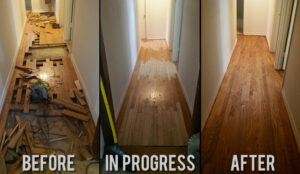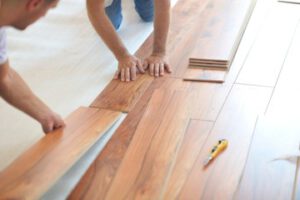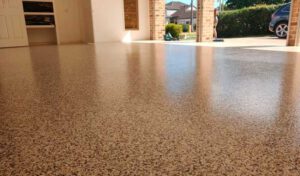Home » Home Improvement
Category Archives: Home Improvement
The Benefits of a Log Home
A log home is a natural, organic structure that fits right into the surrounding terrain. These homes typically feature open-concept living spaces and intricate roof trusses. For more information about log homes, you can visit on this link https://richardsonloghomes.com/ to proceed.
However, there are some things to consider before choosing a log home. First, these homes require more maintenance than conventional properties. They’re also susceptible to rot and insect infestation.

- Aesthetics
Log homes provide stunning scenic backdrops; this aesthetic appeals to people who love the outdoors. They also create a sense of intimacy and coziness. They are the perfect place to disconnect from the hectic, fast-paced world and connect with family members and the beauty of nature.
They can be crafted in various architectural styles, so you can find one that suits your design tastes. Whether you prefer the classic look of round, tapered, or sawn or the modern twist offered by timber frame construction, there’s a log home for everyone.
Traditional types of log homes use handcrafted or milled logs to build the load-bearing structure of the house. They are then sealed and chinked to protect them from the elements, creating a rustic and beautiful aesthetic.
Some people erroneously believe that log homes destroy trees. Still, today’s environmentally-conscious builders take great care to ensure they only cut down trees to build a log cabin. The logs are often harvested from sustainable forests, where the cutting is a form of reforestation that helps maintain healthy forests and reduce wildfire risk.
Both log and timber framing have a long history, but they experienced a revival in popularity in the 1970s. Today, many log and timber frame homes have open-concept designs with cathedral ceilings, walls of windows, and intricate roof trusses.
When you live in a log cabin, you can wake up to spectacular views of mountains, lakes, or rivers and enjoy the sound of birds chirping and water lapping the shore. At night, you can gaze at the stars and planets, a wonderful experience that helps you reconnect with nature and feel one with it.
- Energy Efficiency
According to the National Bureau of Standards, log homes use up to 30% less energy than stick-framed houses—their superior insulation results from a combination of factors. One of the most important is logs’ natural thermal mass and low thermal conductivity. The logs absorb the sun’s heat during the day and release it slowly through the night, keeping your home comfortable year-round. This translates into lower heating and cooling bills and reduced maintenance costs.
Another factor is the logs’ hygroscopic properties, which can quickly absorb moisture. However, this will be fine if the logs are properly treated and maintained. To prevent moisture and fungus problems, it is recommended that all logs be pretreated with an oil-based stain or preservative and then reapplied every few years. Generous roof overhangs and drainage systems are also critical for moisture control.
Log homes sometimes need help meeting strict energy codes because they don’t comply with conventional codes and need help with construction and insulation. However, many states that follow ASHRAE 90.2 include a “thermal mass” provision in their building code, making it easier to comply with the standard with a log home.
In addition to R-value, alternative heat sources such as wood stoves and passive solar design can help make your log home more energy efficient. We can help you find the right mix of these and other features that will work for your particular climate and ensure you comply with the building codes in your area.
- Fire Resistant
Log homes evoke a sense of history, quality, and tradition that many buyers desire. They also appeal to those seeking a simpler life and an emotional connection with nature. This all-natural construction method is green and provides an indoor living environment free of off-gassing associated with manufactured materials such as carpet, vinyl flooring, and paint. Using natural wood stain and regular HVAC maintenance also prevents the buildup of mold, mildew, carpenter ants, termites, and other insect infestations.
Logs’ large diameter and solid nature make them a great fire-resistant building material. This is especially true in scribe fit log construction, where the ends of each log are squared and nailed with dovetail joints, creating a strong bond that prevents the spread of fire throughout the structure. Using chinking and sealants that meet stringent one-hour fire ratings further bolsters the resistance of log walls.
While the inherent fire resistance of log homes is a huge benefit, builders and homeowners must still adhere to proper home safety protocols and create defensible space around their property. This includes maintaining a professionally inspected heating system, keeping firewood stacks away from the house, and regularly checking logs for wear or vulnerabilities that could lead to ignition.
In addition, a solid log home may only satisfy some code compliance standards in areas such as required insulation R-values. However, some states exempt log-walled homes from these energy standards, and savvy log builders have developed ways to amplify the fire resistance of their structures through careful craftsmanship and the use of special materials such as insulating foam, cladding, and a variety of fire retardant treatments.
- Versatility
Log homes offer homeowners the opportunity to make their houses their own truly. The design options are endless, and because of the way they are built, they can be adapted to fit a wide variety of floor plans.
The versatility of a log home also extends to the decor. Feel free to stray from the traditional country theme you might associate with them, as these homes can easily be fitted for any decor style. This makes them perfect for anyone who wants a rustic yet elegant living space.
Another advantage to using logs for your home is their energy efficiency. Because of the way they absorb and radiate heat, log homes are naturally insulated. This means your home will stay cooler in the summer and warmer in the winter. Log homes are also extremely sturdy and often withstand natural disasters better than standard stick-framed homes.
However, the versatility of a log home also comes with some negatives. Because logs are so exposed, they require more maintenance and attention than traditional homes. This includes re-staining and caulking regularly to ensure they are protected from the elements. Logs can also attract pests like termites and carpenter bees, which may need to be addressed by a professional. Because log homes tend to be in rural areas, they may also need help finding insurance compared to their traditional counterparts.
Choosing a company that is a Log and Timber Homes Council (LTHC) member can help you avoid some of the pitfalls associated with a log home. LTHC members must adhere to a strict code of ethics and are committed to quality service, safety, and education. They invest in research and development that helps the industry stay on top of new codes, standards, and product advancements.
- Environmentally Friendly
Log homes are a natural choice for the environmentally conscious. They are almost completely made from raw materials, except sealant and caulking. This makes them more eco-friendly than traditional homes constructed with iron, concrete, and drywall.
Timber is a renewable resource and is sourced from sustainable forests. The process of harvesting logs does not result in the loss of valuable living trees, and the logs are replanted and nurtured for future generations. Because of this, log homes are carbon-positive from cradle to gate. This includes embodied carbon from the materials used in construction and emissions generated by transportation and onsite installation.
In addition to their environmentally friendly materials, logs help promote healthy indoor air quality. They naturally regulate humidity and allow for better airflow. This can help prevent everything from pet dander to smoke and pollen from lingering in the air, which can lead to allergies, high blood pressure, and other health problems. Additionally, it can reduce the need for expensive HEPA filters, dehumidifiers, and air purifiers, which require more energy and materials to manufacture.
As the green movement continues to gain momentum, more and more people are seeking ways to minimize their environmental impact. Fortunately, log homes provide an easy solution. Their natural insulating properties can make them more energy efficient than other home types, significantly saving energy costs. In addition, wood can absorb and store solar energy during the day, which can be released into the home at night. This can eliminate the need for mechanical air conditioning, a significant greenhouse gas source. Logs are more resilient than other materials and can be recycled at the end of their life.
Steps in Floor Refinishing
If your hardwood floors have been worn down, you may want to consider Floor refinishing. It can be less expensive than replacing them and is less invasive to your home.

To determine whether a floor refinishing is right for your home, start with an honest assessment of the damage. It’s best to get a free consultation from an expert.
Sanding is an essential step in any hardwood floor refinishing project. It can help remove light scratches and stains, and it can even give the wood a new look. It can also help prepare a wood floor for staining or applying a protective coating of paint, lacquer or polyurethane.
There are many different types of abrasives to choose from when sanding. Some of the most common include silicon carbide, abrasive paper, abrasive cloth and ceramic. Regardless of what type of abrasive you use, it’s important to understand the differences between each.
Abrasives come in various sizes, shapes and grits. These vary in hardness, and each grit has its own characteristics, such as whether it’s coarse or fine.
The most important thing to remember when sanding is to keep the abrasive in contact with the floor. This ensures that the abrasive isn’t scratching the floor or causing damage to the finish.
If you’re using a drum sander, wear safety goggles, ear protection and a dust mask while operating the sander. Work the sander in long overlapping strokes, moving parallel to the direction of the boards, not across the wood grain.
To reduce the amount of wood dust produced, switch sandpaper frequently. It’s also important to sand in well-ventilated areas.
It’s a good idea to sand the floor in stages, starting with coarse paper and working your way up to finer grits. This way, you’re not cutting the wood too much or causing more harm than necessary.
Depending on the condition of the floor, you may need to stand more than once before it is completely smooth. Generally, hardwood floors can accept up to three deep sandings before they’re ruined.
If you’re sanding an older or very hard floor, it’s best to start with 36-grit sandpaper, rather than the coarser 24 or 16 grits used for a fresh, new floor. This can be especially true if the floor hasn’t been sanded in some time or has a heavy coating of paint or other finish on it.
Staining is a step in floor refinishing that involves applying a color-changing chemical to the wood. It can enhance the wood’s natural grain or create a new pattern. It also protects the wood from wear and tear.
There are many different types of stains, ranging from very light to dark and from water-based to oil-based. The type of stain you choose depends on the purpose of your project. For instance, a woodworker might prefer an alcohol-based stain for its ease of application and its ability to penetrate deep into the wood fibers.
Oil-based stains tend to result in more richly colored finishes than water-based stains, and they’re ideal for hard woods such as oak. However, they’re toxic and need decent ventilation. They can be applied with a brush, but use mineral spirits to clean the brush before you start applying the stain.
Whether you apply the stain with a brush or a rag, try to apply enough of it to cover the entire surface of the wood. This will minimize overlap marks that will make the finish look uneven and patchy.
If you’re staining a hardwood floor, consider choosing an alcohol- or spirit-based stain, which dry faster than traditional water-based stains. These stains are easier to apply with a brush and are ideal for wood with thick grain.
It’s a good idea to test the stain on scrap wood, so you can get the right shade. Then, follow the manufacturer’s directions for how much to apply and where to apply it.
When you’re finished, leave it to dry for 24 hours. Then, apply a protective coating called a clear finish. A coat of this will give your floors a polished, lustrous sheen and help them stand up to daily wear.
What You Need to Do Before Flooring Installation
If you’re considering installing new flooring in your home, you may be wondering what you need to do before getting started. Read on Vinyl Plank Flooring Installation to learn more.

When you decide to get new flooring in your home, there are some things you need to do first. These preparations will help ensure your installation goes smoothly.
One of the most important things to do is clear out the area before installation. This will help minimize cleanup and avoid accidental scratches.
You will need to remove furniture from the room. Depending on the type of flooring you choose, you may need to clear out shelves, closets, and other areas.
Before installing a new floor, you need to declutter the area and make sure there is enough room for the installers. Also, you need to make sure your pets and children are safe. Some installers will move heavy furniture and appliances for you. They will also make sure your electronics are properly disconnected.
Before the work begins, you need to remove any glass, ceramic, or glass-topped lighting fixtures. The same goes for any wall hangings or other decorations. Ideally, you will be moving these items into another room.
Then, you will need to make arrangements for any gas and electrical appliances. Gas-powered appliances need to be removed before installation. In addition, you need to provide access for the company to run the electric outlets. If you do not have these in place, you may need to arrange for professionals to do it for you.
After the flooring is installed, you can start painting. However, before you paint, you should check with the flooring specialist about the best methods for cleaning the surface. Many people opt for hardwood flooring because it does not hold dust.
You may need to make a few minor adjustments to your doors. Be sure to use hinges, not screws, when replacing them.
Getting a quote for flooring installation is important, especially if you’re planning to renovate or remodel your home. Having new floors installed can boost your home’s value and add to its appeal. You also need to consider the type of floor you’re going to install.
There are many different types of flooring and materials to choose from. Some of them are more expensive than others, but you can save money by shopping around. For example, you can opt for a slightly less expensive material and still get what you need.
A quote for a project like this can vary depending on the size of your house, your flooring type, your location, and the type of contractor you hire. A professional installer should be able to provide a price estimate for you.
If you’re ready to start a flooring project, you can either email or call a company. Many flooring companies offer free estimates. However, you may need to pay for travel costs or furniture moving fees.
The average cost of installing flooring is $3,067 for 500 square feet. Labor costs are typically the second largest factor in determining the cost of a job.
While the cost of a single flooring installation may seem high, the total cost of the entire project will depend on the size of your home, the type of floor you’re installing, and whether you’re removing an existing floor.
To get an accurate flooring installation quote, you should also inquire about any additional services the contractor might offer. For example, you might need to remove existing floors, or you might need to replace subfloors.
Another thing to keep in mind is the quality of the material. High-end materials can drive up the cost of a flooring project, but you can choose lower-cost materials if you want to save.
